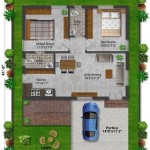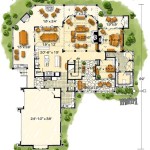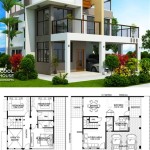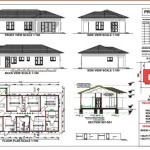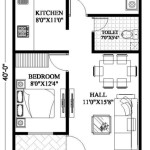Four-Bedroom Bungalow House Plans in Nairobi: Essential Aspects to Consider
Are you searching for the perfect four-bedroom bungalow house plan in Nairobi? With its vibrant real estate market and diverse neighborhoods, the city offers a wide range of options to suit your needs. Whether you're a first-time homebuyer or looking to upgrade, understanding the essential aspects of bungalow house plans is crucial for making an informed decision.
1. Land Size and Layout
The size and layout of the land you choose will significantly impact the design and functionality of your bungalow. Consider the orientation of the plot, topography, and any existing structures or trees. A well-planned layout should optimize sunlight, ventilation, and privacy while maximizing usable space.
2. Floor Plan Efficiency
The floor plan of your bungalow should flow seamlessly and meet the needs of your lifestyle. A well-designed plan will minimize wasted space and ensure efficient movement throughout the house. Consider the location of the bedrooms, bathrooms, living areas, and kitchen in relation to each other.
3. Structural Design
The structural integrity of your bungalow is paramount. Choose a plan that incorporates durable materials and sound engineering principles. Consider the type of roof, walls, and foundation that will best suit the local climate and building codes.
4. Natural Lighting and Ventilation
Nairobi enjoys ample sunshine, so maximizing natural lighting in your bungalow is essential. Large windows and strategically placed skylights can flood the interior with sunlight, creating a bright and airy atmosphere. Proper ventilation is also crucial for maintaining a comfortable indoor environment, so include ventilation systems and cross-ventilation features.
5. Outdoor Living Spaces
Bungalows often offer ample outdoor space. A well-designed plan will seamlessly integrate the indoor and outdoor areas, creating inviting extensions of your living space. Consider including a patio, deck, or garden area where you can relax and entertain.
6. Security Features
Security is a primary concern in Nairobi. Ensure your bungalow plan includes robust security measures such as sturdy doors, burglar bars, and motion sensor lights. Consider installing an alarm system and security cameras for added peace of mind.
7. Customization and Flexibility
Finding a plan that aligns with your specific needs and preferences is essential. Many builders in Nairobi offer customizable plans that allow you to tailor the design to your liking. Consider the number of bedrooms, bathroom configuration, kitchen layout, and any special features you desire.
Conclusion
Choosing the right four-bedroom bungalow house plan in Nairobi requires careful consideration of essential aspects like land size, floor plan efficiency, structural design, natural lighting, outdoor living spaces, security features, and customization. By understanding these factors and working with a reputable builder, you can create a beautiful and functional home that meets your unique needs and enhances your quality of life in Nairobi.

Arched 4 Bedroom Bungalow David Chola Architect

Kare 4 Bedroom House David Chola Architect

4 Bedroom Bungalow House Plan Kenya Marble Engineering

Arched 4 Bedroom Bungalow David Chola Architect

4 Bedroom Bungalow House Plan Kenya Marble Engineering

Arched 4 Bedroom Bungalow David Chola Architect

Traditional House Plans Skywad

4 Bedroom Bungalow House Plan By Architect In Kenya Modern Plans

4 Bedroom Bungalow House Plan In Nairobi Cbd Pigiame

Arched 4 Bedroom Bungalow David Chola Architect

